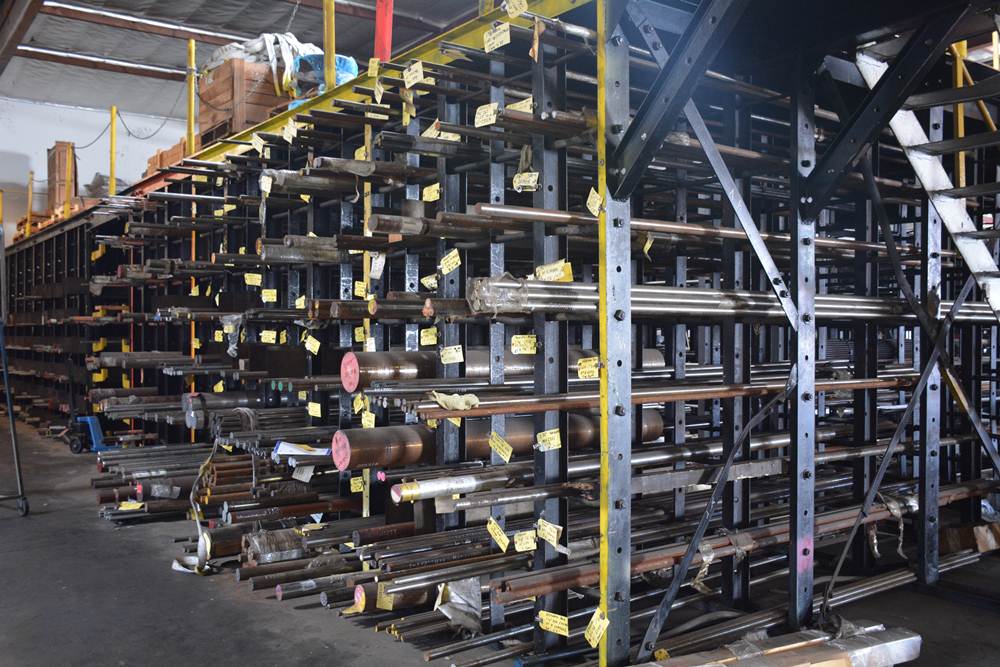Precision forging is a controlled deformation process under localized compressive forces, ensuring metals’ meticulous transformation into desired shapes with minimal wastage and utmost accuracy. Unlike traditional forging, which often requires additional machining, precision forging aims to produce near-net-shape parts.
Within aerospace, the demands are monumental. Aircraft components must endure extreme conditions, tolerate immense pressures, and remain unwaveringly reliable.
Evolution of Forging in Aerospace
As aircraft designs evolved, becoming more complex and powerful, the forging industry kept pace. By the mid-20th century, as jet engines emerged and space exploration began, precision forging became a cornerstone, enabling the creation of intricate and robust aerospace parts.
Stainless Steel: A Choice Material
Not all stainless steel is created equal. The 300 series, especially type 304 and 316, with their high chromium and nickel content, is frequently used for interior fixtures and non-critical components. Conversely, the 400 series, being magnetic and heat-treatable, often finds its way into gear components and turbine blades.
Precision Forging Process
Pre-Forming Steps
Before forging commences, there’s a meticulous process of preparation. The raw stainless steel undergoes cleaning to remove any impurities or contaminants. It’s then cut and shaped into a billet or a pre-form, a rudimentary shape that closely resembles the final product, setting the stage for precision forging.
Heating and Forging Temperatures
Achieving the right temperature is pivotal. Too low, and the steel won’t deform properly; too high, and its properties might get compromised. For stainless steel, the forging temperature typically ranges between 2100°F to 2300°F.
Forging Presses and Equipment
The heart of the precision forging process is the press. Ranging from hydraulic to mechanical, these mammoth machines apply the necessary force to transform our pre-formed metal into its final shape. Advanced presses, equipped with computerized systems, ensure repeatability, precision, and consistency, producing aerospace-grade components time after time.
Looking for a stainless steel distributor? Contact Friend Metals today.
Related article: Titanium, Stainless Steel, and Aluminum: AMS Forging
Techniques in Crafting Intricate Components
Here’s the list of the primary methods that mold stainless steel into aerospace marvels.
Open-Die Forging At its core, open-die forging involves hammering or pressing a metal between two flat dies with no predefined shape. The artistry of the forger, combined with carefully controlled movements, gradually shapes the metal into the desired configuration. Often used for larger, simpler shapes or when low quantities are needed, it’s a versatile method ideal for unique aerospace components.
Closed-Die Forging Contrary to its open-die counterpart, closed-die forging employs dies that precisely mirror the component’s desired shape. As metal is compressed within these dies, it fills the cavities, taking on the detailed form of the tooling.
Isothermal Forging Temperature remains a cornerstone in forging, and isothermal forging optimizes this aspect. Conducted in vacuum or inert environments, the metal and the dies are maintained at the same elevated temperature throughout the process. This uniform temperature control minimizes the strain on the metal, ensuring a refined grain structure and exceptional mechanical properties—qualities prized in aerospace applications.
Ring Rolling Ring components, common in engines and turbines, demand a unique forging technique—ring rolling. Starting with a pre-shaped ring, it’s placed between rolls that continuously reduce its thickness while increasing its diameter.
Advantages of Precision Forged Components
Reduced Material Wastage Precision forging’s ability to produce near-net-shape components means there’s minimal material removal post-forging.
Superior Surface Finish With the meticulous control in precision forging, the resultant components often have a smoother surface finish.
Consistent Microstructure The controlled environment and consistent techniques in precision forging ensure a uniform microstructure in the metal.
Challenges in Precision Forging
Ensuring Material Integrity The high temperatures and pressures involved can introduce imperfections or inclusions in the metal. Stringent quality control measures are vital to detect and rectify these anomalies, ensuring the material’s integrity.
Overcoming Complex Geometries Aerospace components are often marked by intricate designs and sophisticated geometries. Crafting such shapes without compromising on accuracy demands skill, precision equipment, and advanced tooling.
Maintaining Tight Tolerances The margin for error in aerospace is virtually nonexistent. Maintaining the tight tolerances—often down to mere micrometers—is a persistent challenge that demands the zenith of craftsmanship and technology.
Cost Implications While precision forging can be cost-effective in terms of material wastage, the initial investment in tooling, equipment, and skilled personnel can be high. Balancing quality with cost considerations remains a perpetual dance for manufacturers.
Sustainability and Environmental Considerations
Amidst the technological prowess that defines precision forging, the industry is increasingly cognizant of the environmental footprints left behind. As forging evolves, the harmony between industrial progression and ecological responsibility becomes pivotal.
Energy Consumption
Precision forging, with its high temperatures and immense pressures, inevitably draws substantial energy. Heating the stainless steel, operating the forging presses, and cooling the components all require power.
Recycling Opportunities
In an era of circular economies, the forging industry has not lagged. Scraps, offcuts, and even flawed components are increasingly being reprocessed and reintroduced into the production chain.
Future of Precision Forging in Aerospace
Technological Innovations on the Horizon
We’re on the cusp of a technological renaissance in forging. Advancements like AI-driven machinery that can adapt and optimize forging parameters in real-time, predictive maintenance of equipment, and the synergistic integration of additive manufacturing techniques are set to redefine the landscape.
Forecasted Trends and Demands
The aerospace sector is undergoing its own metamorphosis. With a global emphasis on greener aviation, there’s an impending demand for components that are lighter yet stronger. Similarly, as electric propulsion systems gain traction, the need for intricately forged components that can withstand varied stresses will rise. Precision forging will, thus, need to be agile, innovating in tandem with these shifts, crafting the very sinews and bones of future aerospace marvels.
Related article: AMS Specifications for Stainless Steel: Guide for Aerospace Clients
Visit us at: 14729 Spring Ave, Santa Fe Springs, CA 90670
Call us: Local: 714-632-0140 Toll-Free: 800-854-6777

